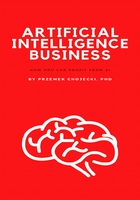
Practical AI and how it is done
Artificial Intelligence in business is practical. When you think about neural networks, don’t think about abstract mathematical structures, but rather computer systems that need data to learn business processes and how to operate within them.
Data Science is not a real science, it’s an experimentation domain, where you need to constantly adjust, test, build prototypes from scratch, and rebuild what you have. It’s a framework for approaching problems rather than a specific set of tools. This paradigm of using neural networks, statistics on steroids, is what makes AI both practically and theoretically complex, with such a broad range of applications, which we’re going to cover in the next chapter.
So how Data Science or Artificial Intelligence is currently done? You could split the actual work into two parts, connected strongly with each other:
- implementation,
- research.
Implementation phase is focused on delivering practical solutions to a specific business problem. By using data from within your organisation, data scientists implement machine learning models to learn on this data. This phase is heavily focused on engineering aspects of data science:
- cleaning data
- feature extraction
- statistical analysis
- training neural networks
- setting up virtual machines and a general framework.
Research phase is about looking for possible tweaks, ameliorations, or totally new approaches to existing problems. It may consist of reading scientific papers, white papers from other organisations, browsing open-source code on Github, talking with fellow machine learning engineers, attending conferences. The goal is to broaden perspective and find new strategies to implement.
It’s in general impossible to say what comes first, implementation or research, as the first steps of data scientists are often building the very first naive model, seeing how it works on given data, and then looking for other approaches and enhancements. For harder and more engaging projects, machine learning engineers might start with research, reading what’s possible to find on a subject on the web, and only then choosing a couple of models to implement and try.
Nevertheless, data scientists spend most of the time in front of the computer, whether reading, writing code, or training machine learning models. What’s often misunderstood in corporations is that usual sprints done in classical software development (lean startup method) are not always beneficial to finding solutions to more involved problems that require deep thinking. That’s why the 20% rule of Google, allowing for 20% time off to work on software engineers’ own projects, is so fruitful. Data scientists need to tinker and play around with ideas to boost their creativity.